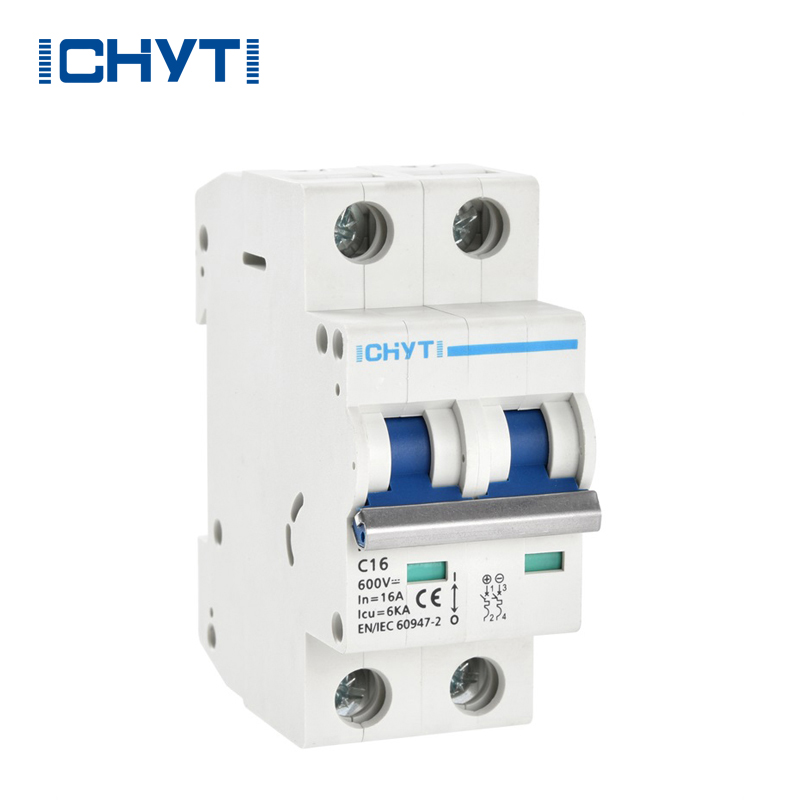Why Are Circuit Breakers Essential for Electrical Safety and Efficiency?
2024-12-26
When it comes to electrical systems, whether in homes, commercial buildings, or industrial settings, safety and reliability are paramount. One of the most critical components for maintaining both is the circuit breaker. But why are circuit breakers so essential in safeguarding electrical systems, and how do they contribute to overall electrical safety and efficiency?
In this blog, we will explore the importance of circuit breakers, their role in protecting electrical circuits, and why they are indispensable in modern electrical setups.
1. What Is a Circuit Breaker?
A circuit breaker is an electrical switch designed to automatically protect an electrical circuit from damage caused by overloads or short circuits. When the circuit detects an abnormal condition, such as excessive current flow, the circuit breaker trips, cutting off the power supply to prevent potential hazards like fires, electrocution, or equipment damage.
Circuit breakers are available in different types, including automatic and manual versions, with various specifications designed for different applications and current ratings.
2. How Do Circuit Breakers Work?
Circuit breakers work by monitoring the electrical current flowing through a circuit. They are designed to "trip" or interrupt the power supply when they detect dangerous conditions, such as:
- Overcurrent: This occurs when the current exceeds the safe limit for a circuit, potentially leading to overheating and fire risks.
- Short Circuits: A short circuit happens when there is a direct connection between two conductors, bypassing the load and causing a large surge of current.
Once the circuit breaker detects one of these conditions, it opens the circuit and disconnects the power to protect the system. After tripping, the breaker can either be reset manually or automatically, depending on the design.
3. Why Are Circuit Breakers Important for Electrical Safety?
Circuit breakers play a crucial role in ensuring the safety of both the electrical system and people using it. Here’s why they are indispensable:
- Preventing Fires: Overloaded circuits can cause wires to overheat, which can lead to fires. By automatically disconnecting the power when it detects an overload, a circuit breaker reduces this risk, making homes and workplaces safer.
- Protecting Against Electrical Shocks: In the event of a short circuit or ground fault, circuit breakers help prevent electrical shocks, which can be lethal. This is particularly important in high-voltage systems or when handling sensitive equipment.
- Safeguarding Equipment: Excessive current can damage appliances and electrical equipment, leading to expensive repairs or replacements. By interrupting the flow of power when necessary, circuit breakers help protect valuable devices and machinery.
- Ensuring Compliance with Safety Standards: In many regions, electrical codes and regulations require circuit breakers as part of a building’s electrical system. Installing proper circuit protection is crucial for passing inspections and adhering to safety standards.
4. What Are the Different Types of Circuit Breakers?
There are several types of circuit breakers, each designed to serve a specific purpose. The most common types include:
- Miniature Circuit Breakers (MCBs): These are typically used in residential and commercial applications. They are designed to protect against overloads and short circuits in lower voltage circuits, usually up to 240V.
- Molded Case Circuit Breakers (MCCBs): MCCBs are used for higher current ratings and provide protection against overloads and short circuits. They are commonly found in industrial settings and are suitable for a wide range of voltages.
- Ground Fault Circuit Interrupters (GFCIs): These breakers are designed to protect people from electric shocks by detecting imbalances in current flow between the live and neutral wires, which may indicate a ground fault. GFCIs are often used in bathrooms, kitchens, and outdoor areas.
- Residual Current Circuit Breakers (RCCBs): Similar to GFCIs, RCCBs detect leakage currents that might flow through a person’s body, providing protection from electric shocks. They are commonly used in residential buildings.
- Air Circuit Breakers (ACBs): ACBs are large, high-current circuit breakers used for industrial or commercial applications. They use air to extinguish the arc when the breaker trips.
- High Voltage Circuit Breakers: These are used in power transmission systems to protect high-voltage circuits. They are built to withstand and interrupt currents at very high voltages.
5. Where Are Circuit Breakers Used?
Circuit breakers are found in various applications, including:
- Residential Buildings: In homes, circuit breakers protect individual circuits for lighting, heating, and appliances. They prevent household wiring from becoming overloaded and help protect people from electrical hazards.
- Commercial and Industrial Buildings: In commercial and industrial settings, circuit breakers are essential for protecting large electrical systems, machines, and equipment. They ensure that the electrical infrastructure remains safe and operational.
- Power Stations: Power stations use large high-voltage circuit breakers to protect the transmission and distribution systems. These breakers are designed to handle the high currents that can occur during fault conditions.
- Renewable Energy Systems: In solar or wind power systems, circuit breakers protect the electrical circuits from overcurrent, ensuring that the generated power is safely integrated into the grid.
- Electric Vehicles (EVs): EVs also require circuit breakers to protect the battery and charging system. These breakers help prevent short circuits and overloads during the charging process.
6. How Do You Choose the Right Circuit Breaker?
When selecting a circuit breaker for a particular application, several factors must be considered:
- Current Rating: The breaker’s current rating must be appropriate for the circuit it’s protecting. Choosing the right size ensures it will trip before the circuit becomes damaged by excessive current.
- Voltage Rating: Ensure that the circuit breaker’s voltage rating matches or exceeds the voltage of the system to ensure safe operation.
- Type of Protection: Choose the right type of breaker based on the protection needed—overload, short circuit, or ground fault.
- Breaking Capacity: The breaker’s breaking capacity refers to its ability to interrupt a fault current. Choose a breaker with a sufficient breaking capacity to handle the maximum fault current that could occur in your system.
- Response Time: Faster response times are critical in certain applications, especially when dealing with high-voltage or sensitive equipment.
Conclusion
Circuit breakers are one of the most critical components in modern electrical systems, providing protection against overloads, short circuits, and electrical hazards. They not only ensure the safety of individuals but also protect valuable equipment and prevent costly damage to electrical infrastructure. By understanding the different types of circuit breakers and their applications, you can make informed decisions about selecting and installing them for your electrical systems.



